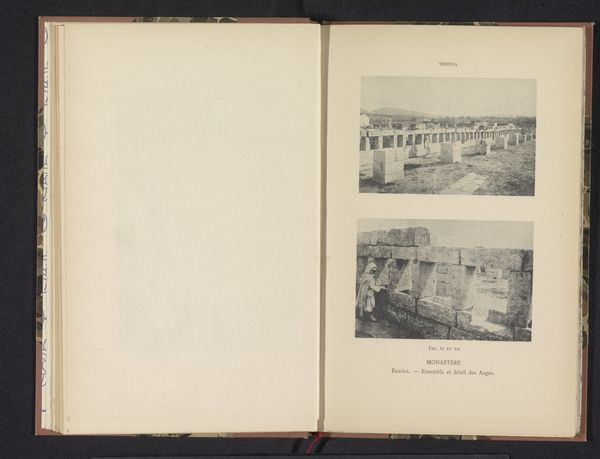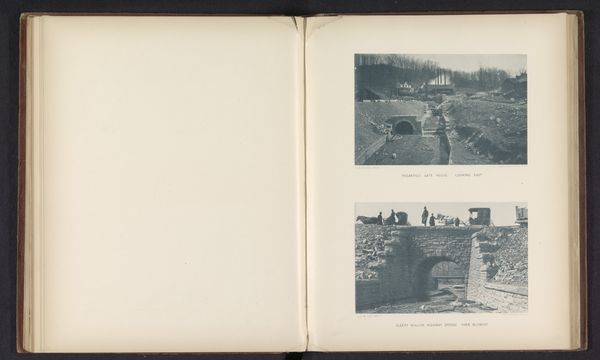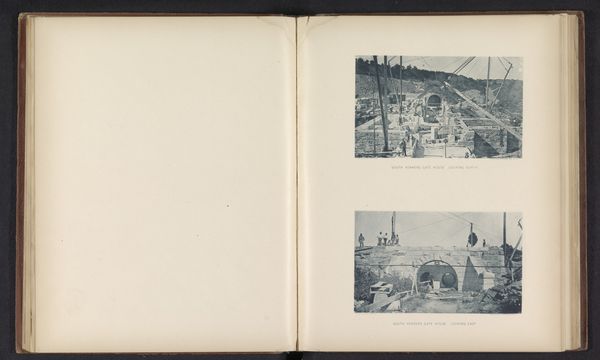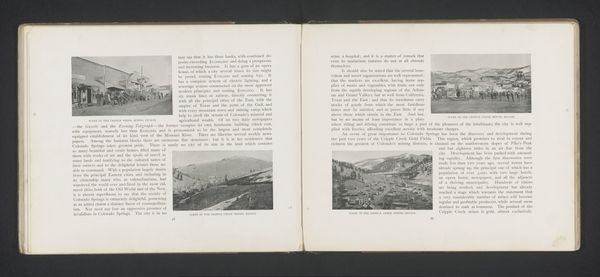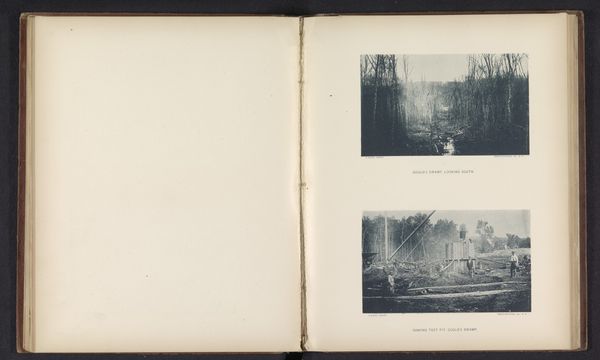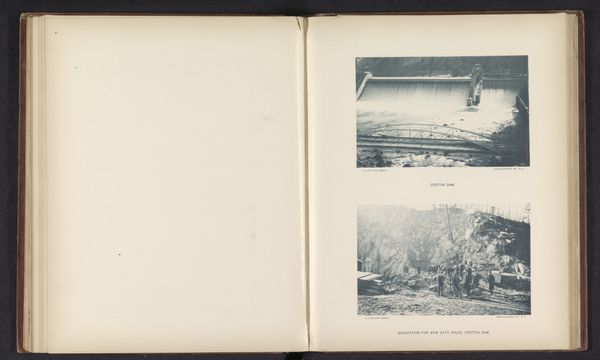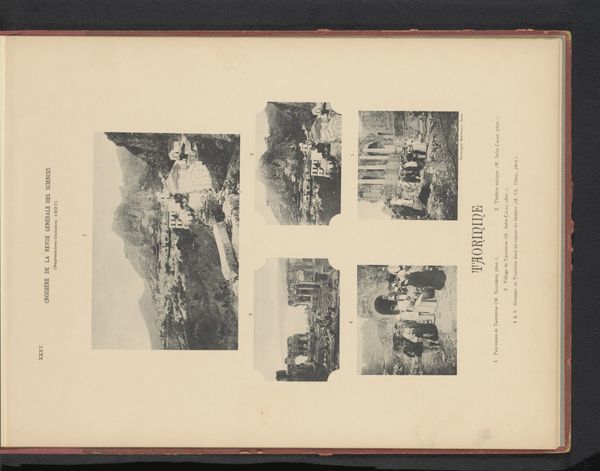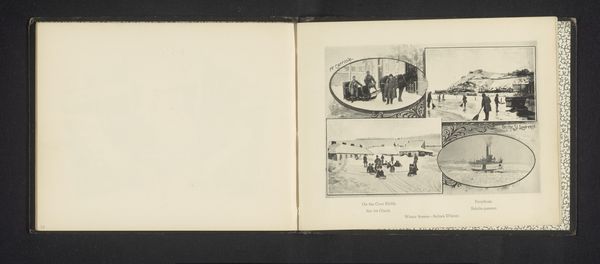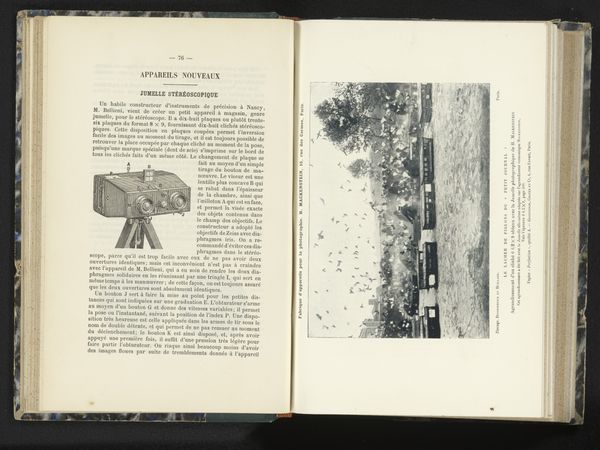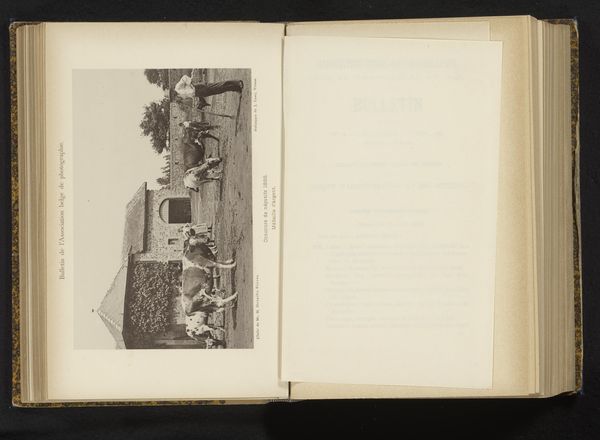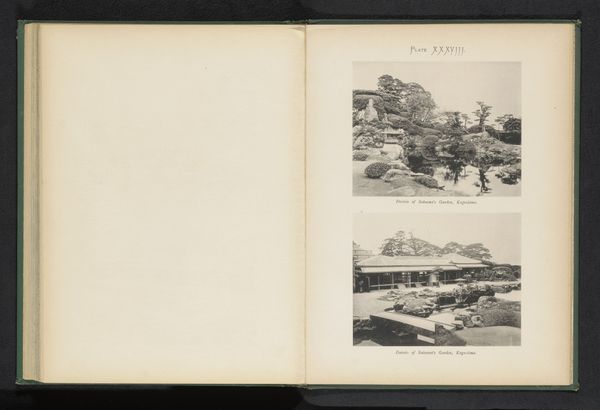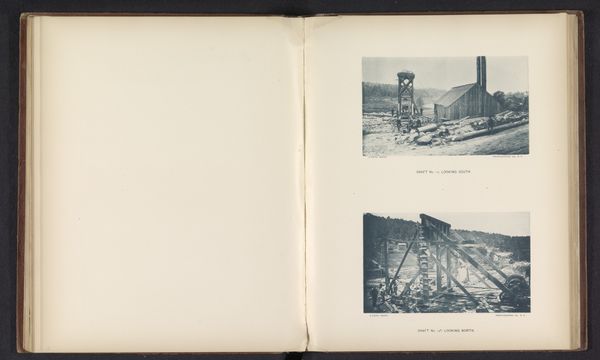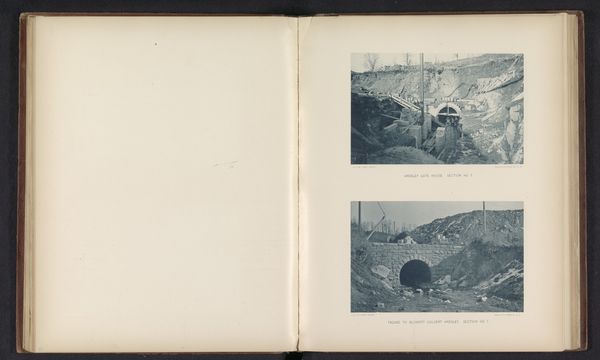![['South Yonkers cut no. 18 looking north', 'Aqueduct at South Yonkers cut, section no. 9'] by P.K. Yates](/_next/image?url=https%3A%2F%2Fd2w8kbdekdi1gv.cloudfront.net%2FeyJidWNrZXQiOiAiYXJ0ZXJhLWltYWdlcy1idWNrZXQiLCAia2V5IjogImFydHdvcmtzLzc5NTZhOGU5LTkyNzUtNGZkYy04MzYxLThkYmQxMWFhMGJlZi83OTU2YThlOS05Mjc1LTRmZGMtODM2MS04ZGJkMTFhYTBiZWZfZnVsbC5qcGciLCAiZWRpdHMiOiB7InJlc2l6ZSI6IHsid2lkdGgiOiAxOTIwLCAiaGVpZ2h0IjogMTkyMCwgImZpdCI6ICJpbnNpZGUifX19&w=3840&q=75)
['South Yonkers cut no. 18 looking north', 'Aqueduct at South Yonkers cut, section no. 9'] before 1887
0:00
0:00
print, photography, gelatin-silver-print
#
ink paper printed
# print
#
landscape
#
photography
#
gelatin-silver-print
#
cityscape
#
realism
Dimensions: height 345 mm, width 272 mm
Copyright: Rijks Museum: Open Domain
Curator: Here we have a page from a photo album by P.K. Yates, dating from before 1887. It contains two gelatin-silver prints: “South Yonkers cut no. 18 looking north” and “Aqueduct at South Yonkers cut, section no. 9”. What are your initial thoughts? Editor: A fascinating duality here. The top image evokes progress, almost a conquering of the land with those linear cuts, while the lower image feels subterranean, like peering into the earth's hidden passages. There's an immediate contrast between above and below. Curator: Exactly. The images capture a period of intense infrastructural development. The construction of the aqueduct at South Yonkers represents the large-scale engineering projects transforming the urban landscape and asserting human dominance. Editor: I'm drawn to the almost mythological feel of the lower image. Those figures standing at the entrance to the aqueduct...it's reminiscent of crossing the threshold to the underworld in ancient legends. The aqueduct itself takes on the quality of a Stygian river, transporting the lifeblood of the city through its dark arteries. Curator: Interesting take. It also makes me think about access and control, both social and practical. The construction highlights the ways resources were being brought to the city, fundamentally changing settlement patterns and labor practices. Whose vision was enacted through these works? Who benefitted, and who was displaced or impacted by it? Editor: That's a vital perspective. Looking at the photograph again, it emphasizes a narrative of imposing will upon nature, with nature forced to accommodate. Yet, within the earth, it carries the imagery of baptism and a spiritual experience of transition as the access to that vital resource flows to people. Curator: Ultimately, it becomes about not just building things but building futures. The physical aqueduct becomes a conduit for social mobility and the continued expansion of urban environments. Editor: A thought-provoking intersection of visual narrative and social progress then; the images serve as tangible markers of where society saw itself in that era, as a story etched on the land itself and into its hidden depths.
Comments
No comments
Be the first to comment and join the conversation on the ultimate creative platform.

